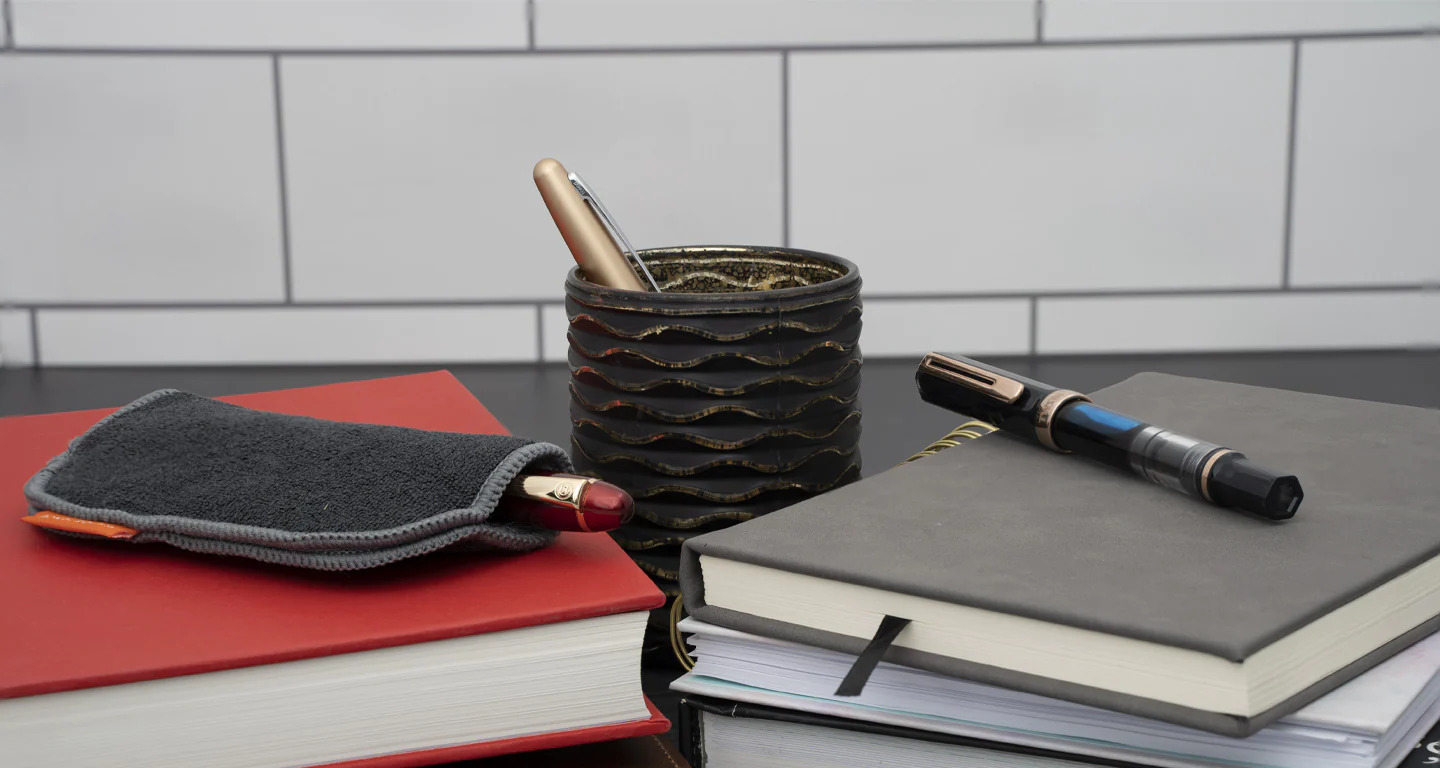

Articles
How To Store A Fountain Pen When Not In Use
Modified: February 27, 2024
Learn the best way to store your fountain pen when it is not in use with these helpful articles. Keep your pen safe and ready for writing.
(Many of the links in this article redirect to a specific reviewed product. Your purchase of these products through affiliate links helps to generate commission for Storables.com, at no extra cost. Learn more)
Introduction
When it comes to writing instruments, fountain pens have a timeless charm and elegance that can’t be matched by modern alternatives. Whether you are a collector or a casual user, proper storage for your fountain pen is essential to maintain its functionality and extend its lifespan. In this article, we will explore the importance of proper storage for fountain pens and provide valuable tips on how to store them when not in use.
A fountain pen is more than just a tool for writing; it is a work of art and craftsmanship. It consists of delicate mechanisms and intricate nibs that require proper care and attention to keep them in optimal condition. By correctly storing your fountain pen, you can prevent ink drying, damage, and other issues that may degrade its performance.
Moreover, proper storage can also help maintain the ink flow, prevent ink leakage, and prevent damage to the nib or barrel due to accidental falls or knocks. Whether you have one fountain pen or a collection, taking the time to store them properly will ensure that they remain functional and in pristine condition for years to come.
Choosing the right storage solution for your fountain pen is crucial. You want a storage option that provides protection from dust, sunlight, and other external factors that can harm your pen. Additionally, the storage solution should keep your pen secure and easily accessible for whenever you want to use it.
There are several options to consider when it comes to fountain pen storage. Some popular choices include pen cases, pen stands, pen rolls, and display cabinets. Each option offers different benefits depending on your preferences and the number of pens you own. Consider the size of your collection and the level of protection required to make an informed decision.
Once you’ve chosen the right storage solution, it’s essential to clean and prepare your fountain pen before storing it. This step ensures that there is no residual ink left in the pen, reducing the risk of clogging or leakage. Cleaning the pen also prevents the growth of mold or bacteria that can damage the pen over time.
In the following sections, we will discuss various methods for cleaning and preparing your fountain pen for storage. We will also provide step-by-step instructions on how to store your pen safely and offer additional tips to ensure its longevity. By following these guidelines, you can rest assured that your fountain pen will be ready for use whenever inspiration strikes.
Key Takeaways:
- Proper storage for fountain pens is crucial to prevent ink drying, damage, and leakage. Choosing the right storage solution and cleaning the pen before storage ensures longevity and functionality.
- Additional tips such as avoiding extreme temperature changes, using silica gel packets, and regular maintenance can further enhance the fountain pen storage experience. Proper care and storage preserve the beauty and functionality of these timeless writing instruments.
Read more: How To Store Fountain Pen When Not In Use
Importance of Proper Storage for Fountain Pens
Proper storage for fountain pens is essential to maintain their functionality and preserve their beauty over time. Here are a few key reasons why investing in the right storage solution is crucial:
- Prevents Ink Drying: Fountain pens rely on the continuous flow of ink to write smoothly. Leaving a fountain pen unused for an extended period can cause the ink to dry up inside the pen and clog the nib. By storing your pen properly, you can prevent ink evaporation and ensure that it is always ready for writing.
- Protects against Damage: Fountain pens are delicate instruments that can be easily damaged if not handled and stored carefully. Proper storage safeguards your pen from accidental falls, knocks, and other physical damage that can affect its performance and aesthetics.
- Prevents Ink Leakage: Storing your fountain pen in an upright position or using a pen case helps prevent ink leakage. This is especially important if you carry your pen with you during travels or daily commutes. A secure storage solution ensures that your pen remains leak-free, protecting your belongings from ink stains.
- Preserves Nib Quality: The nib is the heart of a fountain pen and plays a vital role in the writing experience. Proper storage helps preserve the quality of the nib by preventing it from being bent or damaged. By protecting the nib, you can ensure smooth and consistent ink flow every time you use your pen.
- Maintains Aesthetics: Fountain pens are often cherished for their aesthetic appeal and design. Storing your pen properly can help maintain its beauty by protecting it from dust, sunlight, and other elements that may cause discoloration or tarnish the pen’s materials. A well-preserved pen not only looks good but also retains its value for collectors.
In addition to these benefits, proper storage also facilitates easy access to your fountain pen. By having a designated space for your pen, you can quickly locate it whenever you want to write or use it for artistic endeavors. This saves time and ensures that you can enjoy the pleasure of writing with your fountain pen whenever inspiration strikes.
Overall, investing in proper storage for your fountain pens is a small yet important step in maintaining their functionality, preserving their aesthetics, and ensuring their longevity. By following the right storage practices, you can take pride in your beautiful writing instrument and experience the joy of using it for years to come.
Choosing the Right Storage Solution
When it comes to storing your fountain pens, there are several options to consider depending on your needs and preferences. Here are some popular storage solutions to help you choose the right one for your collection:
- Pen Cases: Pen cases are a classic and practical storage solution for fountain pens. They are available in various sizes and designs, allowing you to store multiple pens securely. Pen cases usually have individual compartments, keeping each pen separate to prevent scratching or damage. Look for cases made of durable materials, such as leather or fabric, to offer optimal protection for your pens.
- Pen Stands: Pen stands are an excellent option if you frequently use your fountain pens and want them easily accessible. These stands keep your pens upright, ready for immediate use. Pen stands come in different designs, including single stands, multiple stands, and rotating stands. Choose a stand that suits your aesthetic preference and offers stability to prevent pens from falling over.
- Pen Rolls: If you prefer a portable and compact storage solution, consider pen rolls. Pen rolls are made of fabric or leather and consist of individual slots or pockets for pens. They are lightweight, making them ideal for travel or carrying your pens in a bag. Pen rolls provide good protection against dust and scratches while keeping your pens organized and easily accessible.
- Display Cabinets: For those with larger fountain pen collections or a desire to showcase their pens, display cabinets are an elegant choice. These cabinets have glass panels to provide a clear view of your pens while offering protection from dust and sunlight. Display cabinets can be standalone or wall-mounted, allowing you to create a stunning display while keeping your pens safe.
When choosing a storage solution, consider the size of your pen collection and the level of protection required. If you have a smaller collection or primarily use one or two pens, a pen case or pen stand might be sufficient. However, if you have a larger collection or want to display your pens, a pen roll or display cabinet would be more suitable.
Additionally, ensure that the storage solution provides a secure and stable environment for your pens. Look for materials that are free from harmful chemicals that could damage the pen’s finishes or ink. Avoid storing your pens near direct sunlight, extreme temperatures, or humid environments, as these conditions can negatively impact the pen’s performance.
Ultimately, choosing the right storage solution for your fountain pens is a personal choice based on your needs and preferences. Whether you opt for a pen case, pen stand, pen roll, or display cabinet, make sure it offers protection, accessibility, and a touch of style to showcase your cherished writing instruments.
Cleaning and Preparing the Fountain Pen for Storage
Properly cleaning and preparing your fountain pen before storage is essential to prevent ink clogs, maintain its functionality, and ensure it is ready to use when you need it. Here are the steps to follow:
- Empty the Ink: Before storing your fountain pen, empty the remaining ink. Carefully unscrew or dismantle the pen according to its specific design. Place a clean tissue or cloth over the nib and turn the pen upside down to allow any leftover ink to drain. Gently blot the nib to ensure it’s dry and free from residue.
- Rinse with Water: Fill a clean container with lukewarm water and disassemble the pen, removing the ink cartridge or converter if applicable. Rinse the nib and feed under gently running water, ensuring any remaining ink is removed. Be careful not to use hot water, as it can damage the pen’s materials.
- Use a Pen Flush Cleaner (Optional): If there are stubborn ink deposits or stains on the nib or feed, you can use a pen flush cleaner. Follow the manufacturer’s instructions and soak the nib and feed in the pen flush solution for a few minutes. Rinse thoroughly with water afterward to remove any traces of the cleaner.
- Dry the Pen: After rinsing, gently shake off excess water from the pen components. Use a clean, lint-free cloth or soft paper towel to dry the nib, feed, and barrel. Ensure the pen is completely dry before reassembling it to prevent mold or bacteria growth.
- Store in a Protective Case: Once your fountain pen is dry, store it in a suitable storage solution, such as a pen case or pen roll, to offer protection from dust and other external factors.
It’s important to note that different fountain pens may require specific cleaning techniques, so always refer to the manufacturer’s instructions. Some fountain pens may also have removable nibs or other disassembleable parts that need to be cleaned separately.
Regular maintenance is key to ensuring the longevity of your fountain pen. Even if you use your pen frequently, it’s a good practice to clean it thoroughly before extended periods of non-use or storage. This will help prevent ink residue from drying and clogging the pen, ensuring it’s ready to write smoothly and flawlessly when you retrieve it.
By following these cleaning and preparation steps, you can keep your fountain pen in optimal condition and prolong its lifespan. Properly cleaned and prepared pens are less prone to issues such as ink clogs, nib corrosion, or degraded ink quality. Invest time in this process, and your fountain pen will reward you with years of dependable writing pleasure.
Store your fountain pen with the nib facing up to prevent ink from pooling and potentially leaking. Keep it in a cool, dry place away from direct sunlight to avoid damage to the ink and materials.
Storing the Fountain Pen
Once you have cleaned and prepared your fountain pen for storage, it’s time to ensure you store it properly to maintain its quality and functionality. Here are some guidelines to follow:
- Choose the Right Location: Select a suitable location to store your fountain pen. Avoid areas with direct sunlight, extreme temperatures, or high humidity, as these conditions can damage the pen’s materials, cause ink evaporation, or lead to mold growth. A cool, dry place is ideal for preserving your pen.
- Keep the Pen Upright: For fountain pens with ink reservoirs, it’s best to store them in an upright position to prevent ink leakage or excessive ink flow. This ensures that the pen’s internal mechanisms remain in their optimal condition and the ink remains contained within the reservoir.
- Use Pen Sleeves or Caps: If your fountain pen comes with a cap or a removable sleeve, always use them when storing the pen. Sleeves or caps protect the nib from dust and other contaminants while keeping the pen secure. If your pen does not have a cap or sleeve, consider using a pen case or pen roll to provide additional protection.
- Separate Individual Pens: If you are storing multiple fountain pens in the same case or compartment, make sure to keep them separate to prevent scratching or damage. You can use pen dividers or individual sections within a pen case to ensure each pen has its designated space.
- Rotate Unused Fountain Pens: If you have a collection of fountain pens, it’s a good practice to rotate the pens you use regularly. This prevents ink from drying up in one pen while allowing you to enjoy the full range of your collection. Rotating unused pens regularly also helps ensure their longevity and prevents any potential issues from prolonged inactivity.
Remember to check on your stored pens periodically, even if they are not in use. This allows you to inspect for any ink residue or signs of damage and take necessary actions promptly. If you notice any issues, such as dried ink or nib clogs, clean the pen before storing it again.
Lastly, if you plan to store your fountain pen for an extended period, consider removing the ink cartridge or converter. This helps prevent ink leakage, drying, or clogging in the pen’s internal mechanisms. Store the ink separately in a cool and dark place until you are ready to use it again.
By following these storage practices, you ensure that your fountain pen remains in optimal condition, ready to provide a smooth and enjoyable writing experience whenever you retrieve it. Proper storage not only preserves the pen’s functionality but also protects its aesthetics, allowing you to appreciate the beauty of your writing instrument for years to come.
Read more: How To Store A Fountain Pen
Additional Tips for Fountain Pen Storage
While the previous sections covered the essentials of properly storing your fountain pen, here are some additional tips and recommendations to further enhance your pen storage experience:
- Avoid Extreme Temperature Changes: Rapid changes in temperature can cause the materials of your fountain pen to expand or contract, potentially leading to cracks or damage. Try to avoid storing your pen in areas that experience frequent temperature fluctuations or extremes.
- Protect the Pen from Airborne Contaminants: To prevent dust, lint, or other airborne particles from settling on your fountain pen, consider storing it in a protective case or using a pen sleeve. Clean the case or sleeve regularly to maintain a clean environment for your pen.
- Use Silica Gel Packets: To combat moisture and prevent the growth of mold or mildew, you can place silica gel packets in your pen case or storage area. Silica gel absorbs excess moisture and helps maintain a dry environment, which is beneficial for the long-term storage of your fountain pen.
- Be Mindful of Pressure: When storing your fountain pen, be mindful of any pressure or force applied to it. Avoid placing heavy objects on top of your pen case or accidentally squeezing your pen too tightly, as this can potentially cause damage to the delicate nib or barrel.
- Labeling or Organizing your Collection: If you have a large fountain pen collection, consider labeling or organizing them based on their ink colors, nib sizes, or brands. This makes it easier to locate specific pens when needed, and also adds a touch of organization and aesthetic appeal to your storage solution.
- Regular Maintenance: Even when stored properly, fountain pens still benefit from regular maintenance. Periodically check your stored pens for any signs of ink residue, corrosion, or damage. Clean and inspect your pens at least once every few months to ensure their longevity and optimal performance.
Remember that each fountain pen is unique and may have specific care instructions provided by the manufacturer. Familiarize yourself with these recommendations to ensure you are giving your pen the best possible care and storage.
By incorporating these additional tips into your fountain pen storage routine, you can maintain the quality, functionality, and aesthetics of your pens for a lifetime. Treat your fountain pen collection with care, and it will continue to bring you joy and inspiration whenever you pick it up to write.
Conclusion
Proper storage for your fountain pens is essential to maintain their functionality, preserve their aesthetics, and ensure their longevity. By investing in the right storage solution and following the recommended cleaning and preparation steps, you can keep your fountain pens in optimal condition and ready for use whenever inspiration strikes.
Choosing the right storage solution, whether it’s a pen case, pen stand, pen roll, or display cabinet, provides protection against dust, sunlight, and other external factors that can harm your pens. Additionally, storing your fountain pens in an upright position and using protective sleeves or caps helps prevent ink leakage and keeps the nibs in pristine condition.
Cleaning and preparing your fountain pen before storage is crucial to prevent ink clogs, maintain ink flow, and ensure the pen is ready to use when you need it. Properly emptying the ink, rinsing with water, and allowing the pen to dry thoroughly reduce the risk of ink residue build-up, mold growth, and damage to the nib or barrel.
By following the recommended storage practices and considering additional tips such as avoiding extreme temperature changes, protecting the pen from airborne contaminants, and practicing regular maintenance, you can ensure the longevity of your fountain pens and preserve their beauty for years to come.
A fountain pen is more than just a writing tool; it is a piece of art and craftsmanship. By storing your fountain pens properly, you are not only protecting your investment but also honoring the artistry and heritage behind each pen.
So, take the time to choose the right storage solution, clean and prepare your pens before storage, and implement the additional tips to enhance your fountain pen storage experience. With proper care and storage, your fountain pens will continue to be a source of joy, inspiration, and timeless elegance for your writing endeavors.
Frequently Asked Questions about How To Store A Fountain Pen When Not In Use
Was this page helpful?
At Storables.com, we guarantee accurate and reliable information. Our content, validated by Expert Board Contributors, is crafted following stringent Editorial Policies. We're committed to providing you with well-researched, expert-backed insights for all your informational needs.
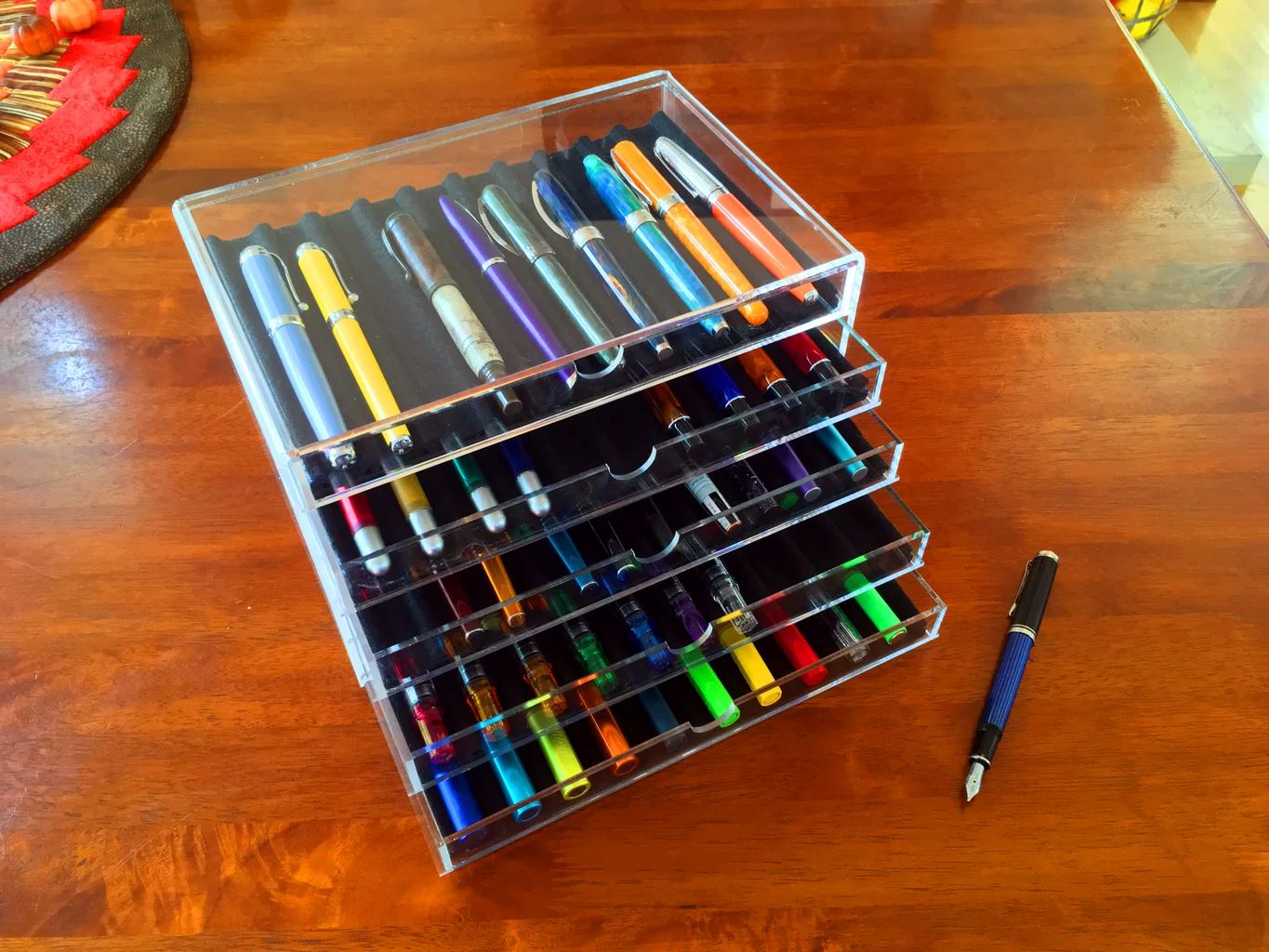

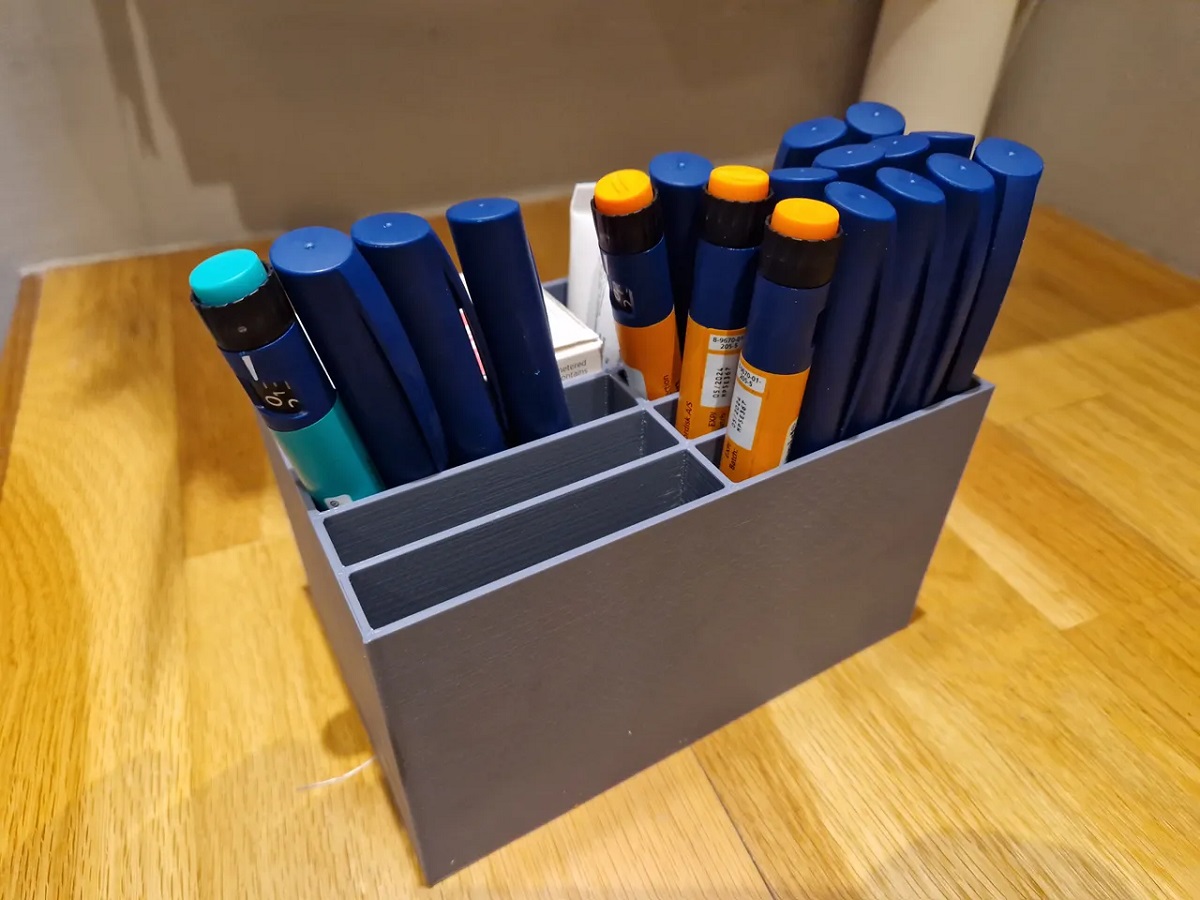






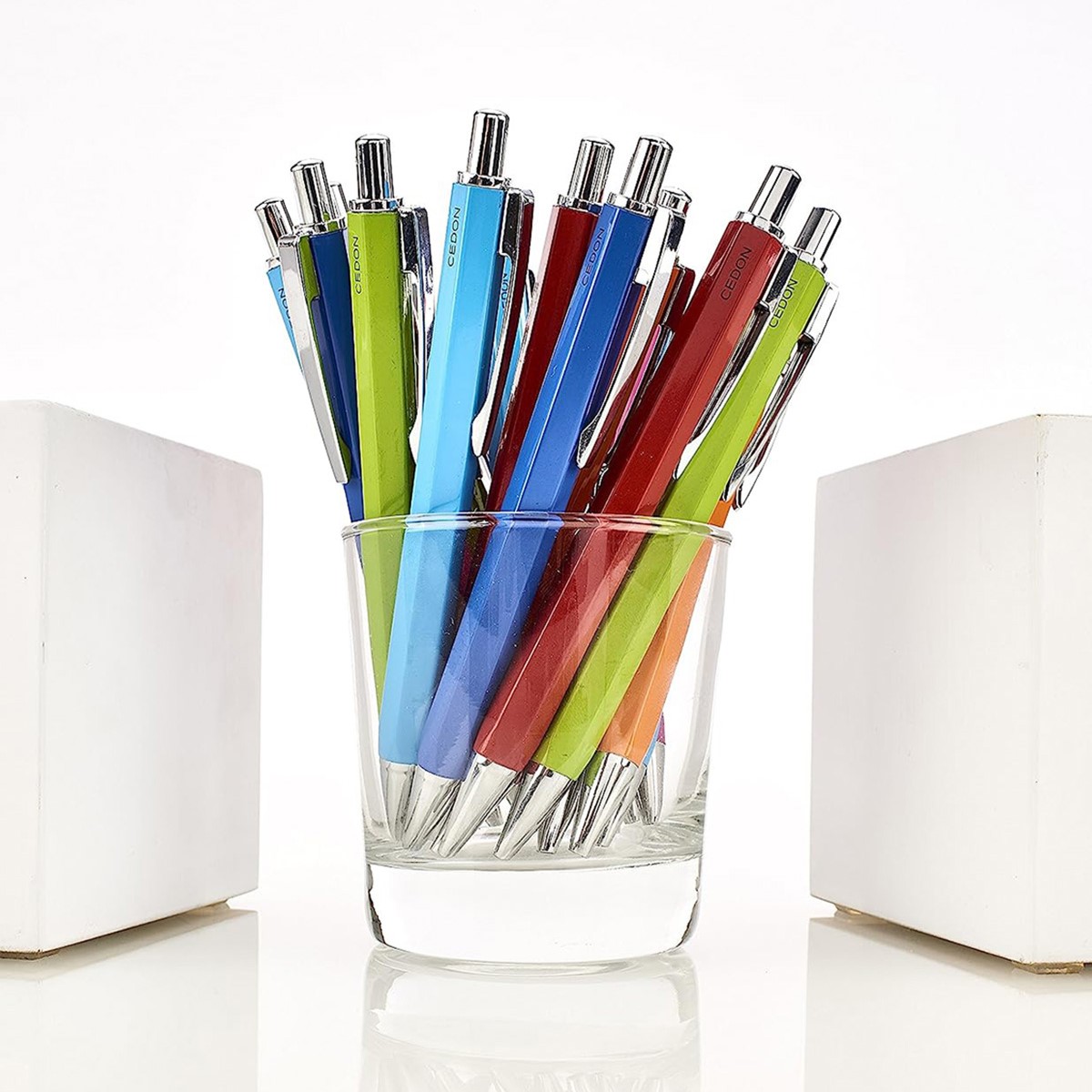
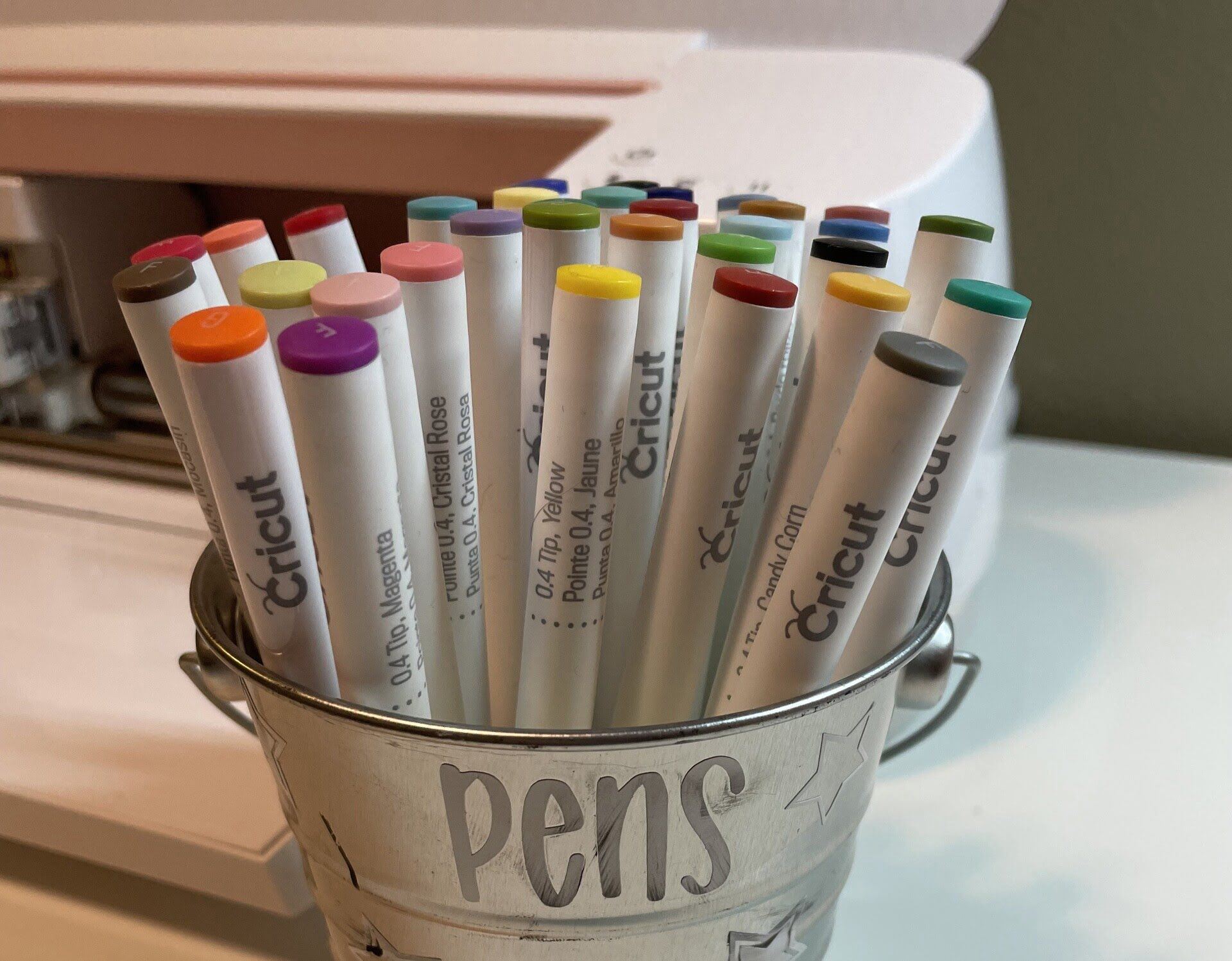




0 thoughts on “How To Store A Fountain Pen When Not In Use”